In the Archives with Secretariat for Ghosts, Archival Politics and Gaps
ENTRÜSTET EUCH! [DISARM YOURSELVES, BECOME OUTRAGED!]
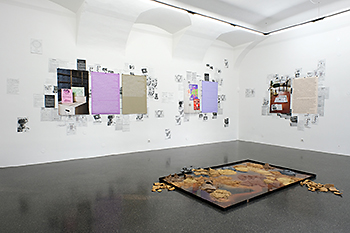
Flyers, ranging from 1979 to 1992, show how the work of feminist groups overlapped with various peace movements. From the North to the West, from the South to the East, from concerts to camps, from information evenings to demonstrations, from quizzes, peace songs, and regular gatherings to peace marches, they document an array of actions and strategies for demanding global peace. They point to the past and offer a glimpse into the future.
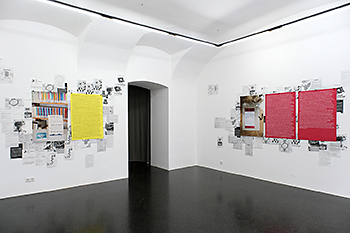
These flyers are part of STICHWORT, the Archives of the Women's and Lesbians’ Movement that was founded in Vienna in 1983. At a time when the peace movement in Europe was remobilizing. The NATO Double-Track Decision of 1979 legitimizing the deployment of new nuclear missiles in Western Europe was one of its triggers. In the 1980s, the arms race between NATO countries and the Soviet Union took on new momentum. The flyers from the archive demonstrate a diverse commitment to peace — the concerns, demands and means of protest, often transcending the borders of nation-states and language barriers. Likewise, the documents emphasize the importance of the STICHWORT archives themselves: Only if archives have collected documents and have made them accessible, are we able to engage with the hi/herstory/ies of resistance and protest.
Since 2012 we, Nina Hoechtl and Julia Wieger, have worked as the Secretariat for Ghosts, Archival Politics and Gaps (SKGAL). In our research-based practice, we delve into places, documents and objects that are largely ignored by the grand narratives of history-writing. It is important for us to do so through feminist and decolonizing lenses. At the Memphis art space we mounted black-and-white copies of the flyers on the walls and windows. They convey the aesthetic and thematic diversity of various actions of the peace movement. We worked with a group of archivists, theorists, artists, and activists with whom we have been in exchange for some time. Together, we delve deeply into a selection of documents: Color photographs of the flyers next to texts printed on colored paper reveal perspectives and questions for the present.
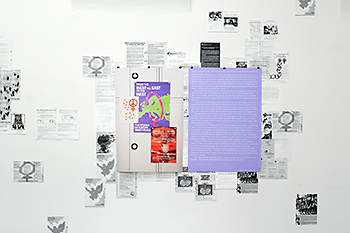
Due to their unwavering relevance, three posters from Great Britain announcing peace actions leave archivist and designer Ego Ahaiwe Sowinski with an eerie feeling, triggering questions about peace and archives. [ >PDF ]
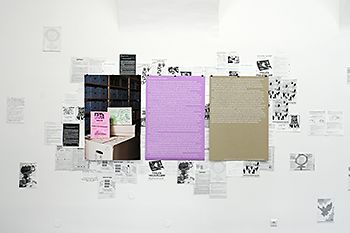
STICHWORT manager and philosopher Margit Hauser writes about the collages on one of the many flyers by women's movement and peace activist Hermi Hirsch, and about how the flyer — twice in red, once in green — arrived at STICHWORT. From 1978 to 1983, Hirsch's Beisl, a pub in Vienna’s city center, was the meeting place of her association Frauen für den Frieden Wien [Women for Peace Vienna].
[ >PDF ]
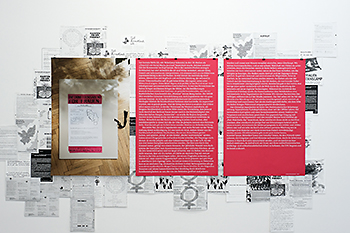
An announcement by the Initiative for Croatian-Serbian Peace Dialogue invites us to reflect on images of war and on images or characteristics “created to be attributed to the enemy.” The flyer from 1992 for the "Information Evening for Women" in Graz arouses Lina Dokuzović's own memories of war. The artist, theorist and activist contrasts current forms of war coverage on Ukraine with those from the war in former Yugoslavia. [ >PDF ]
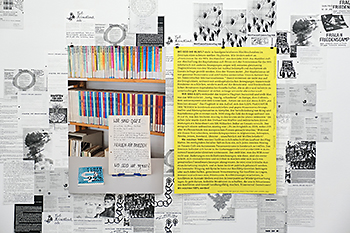
We relate the question "WHERE ARE YOU 99.98%?" posed on the flyer by the Women for Peace in Innsbruck to the 2019 manifesto A Feminism for the 99% by Cinzia Arruzza, Nancy Fraser, and Tithi Bhattacharya – thereby drawing attention to the intersections between war and capitalism. [ >PDF ]
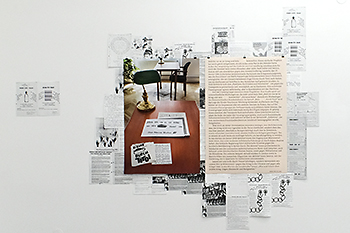
Using flyers from the Blockade Group, which participated in protests against the transport of U.S. tanks through Tyrol during the 1991 Gulf War, archivist Sassy Splitz shows how actions in Austria are connected to wars elsewhere. In her opinion, this awareness is an important step for taking action.
[ >PDF ]
At a time when armed conflicts are reemerging in Europe, the flyers and texts enable us to delve into the sources of the peace movement’s hi/herstory/ies. It’s worth it! Methods of distribution and emphases of demands have changed over the decades, but in the face of violent conflicts — of which war is the most destructive form — the question remains of how to achieve peace for all.
An art project as part of the exhibition AGGRESSIVE PEACE
(May 14 – June 8, 2022) at the Kunstraum Memphis in Linz (Austria).
Secretariat for Ghosts, Archival Politics and Gaps (SKGAL)
in collaboration with
Ego Ahaiwe Sowinski,
Lina Dokuzović, Margit Hauser, and Sassy Splitz;
photographies: Julia Gaisbacher, installation views: Jakob Dietrich.